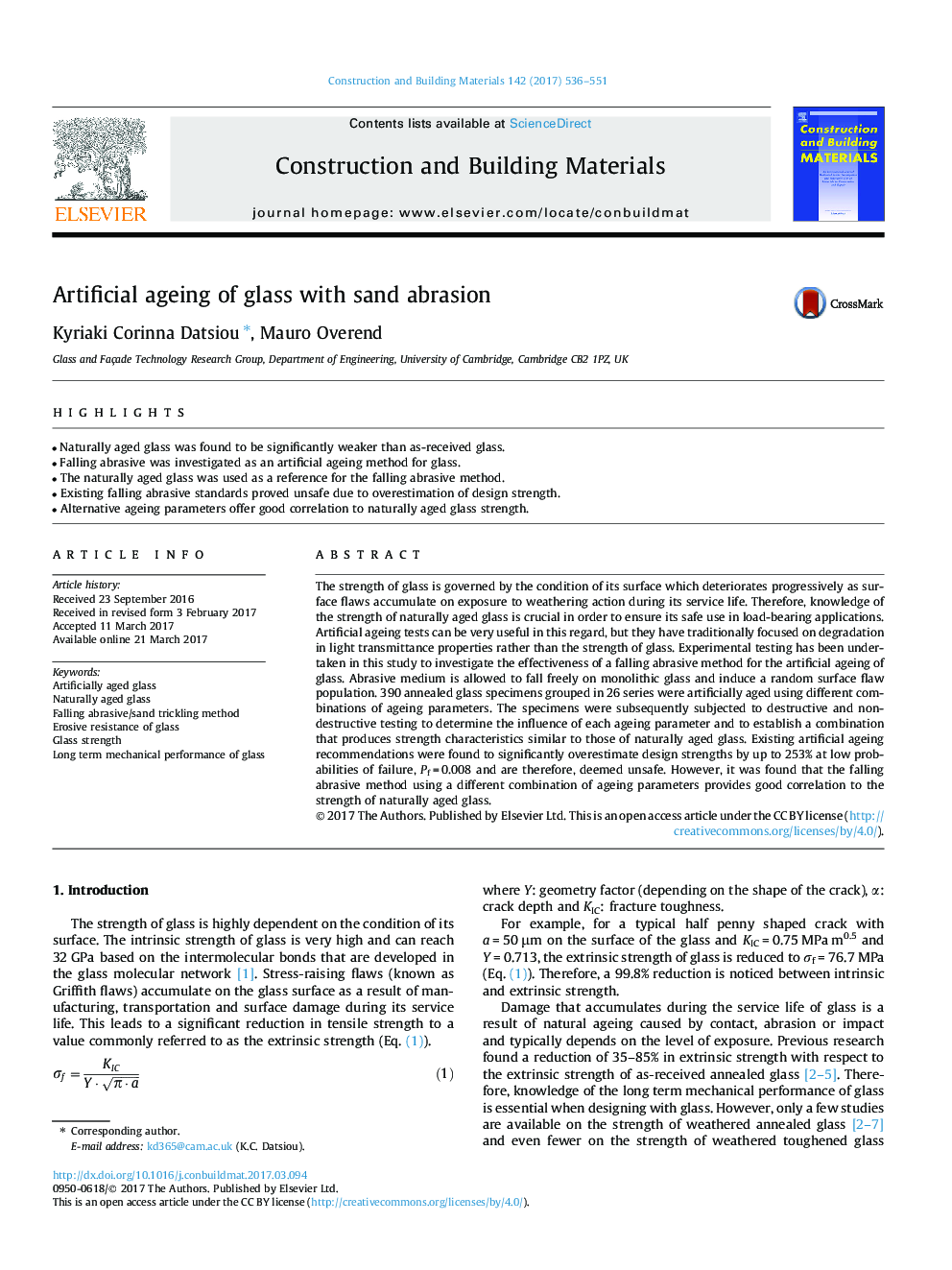| Article ID | Journal | Published Year | Pages | File Type |
|---|---|---|---|---|
| 6480756 | Construction and Building Materials | 2017 | 16 Pages |
â¢Naturally aged glass was found to be significantly weaker than as-received glass.â¢Falling abrasive was investigated as an artificial ageing method for glass.â¢The naturally aged glass was used as a reference for the falling abrasive method.â¢Existing falling abrasive standards proved unsafe due to overestimation of design strength.â¢Alternative ageing parameters offer good correlation to naturally aged glass strength.
The strength of glass is governed by the condition of its surface which deteriorates progressively as surface flaws accumulate on exposure to weathering action during its service life. Therefore, knowledge of the strength of naturally aged glass is crucial in order to ensure its safe use in load-bearing applications. Artificial ageing tests can be very useful in this regard, but they have traditionally focused on degradation in light transmittance properties rather than the strength of glass. Experimental testing has been undertaken in this study to investigate the effectiveness of a falling abrasive method for the artificial ageing of glass. Abrasive medium is allowed to fall freely on monolithic glass and induce a random surface flaw population. 390 annealed glass specimens grouped in 26 series were artificially aged using different combinations of ageing parameters. The specimens were subsequently subjected to destructive and non-destructive testing to determine the influence of each ageing parameter and to establish a combination that produces strength characteristics similar to those of naturally aged glass. Existing artificial ageing recommendations were found to significantly overestimate design strengths by up to 253% at low probabilities of failure, Pf = 0.008 and are therefore, deemed unsafe. However, it was found that the falling abrasive method using a different combination of ageing parameters provides good correlation to the strength of naturally aged glass.
